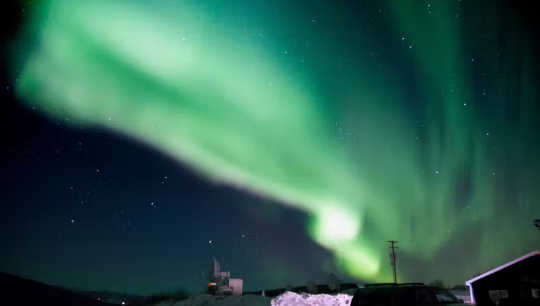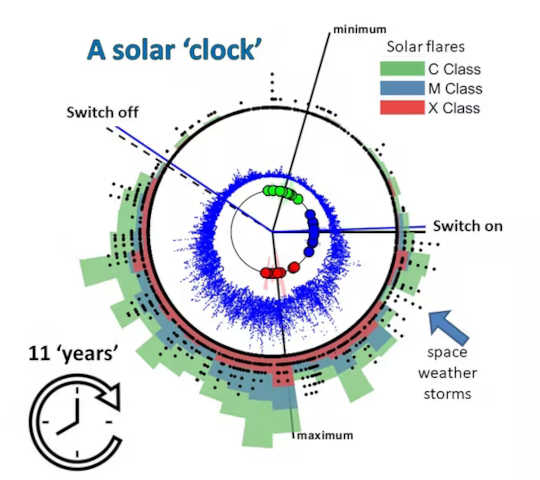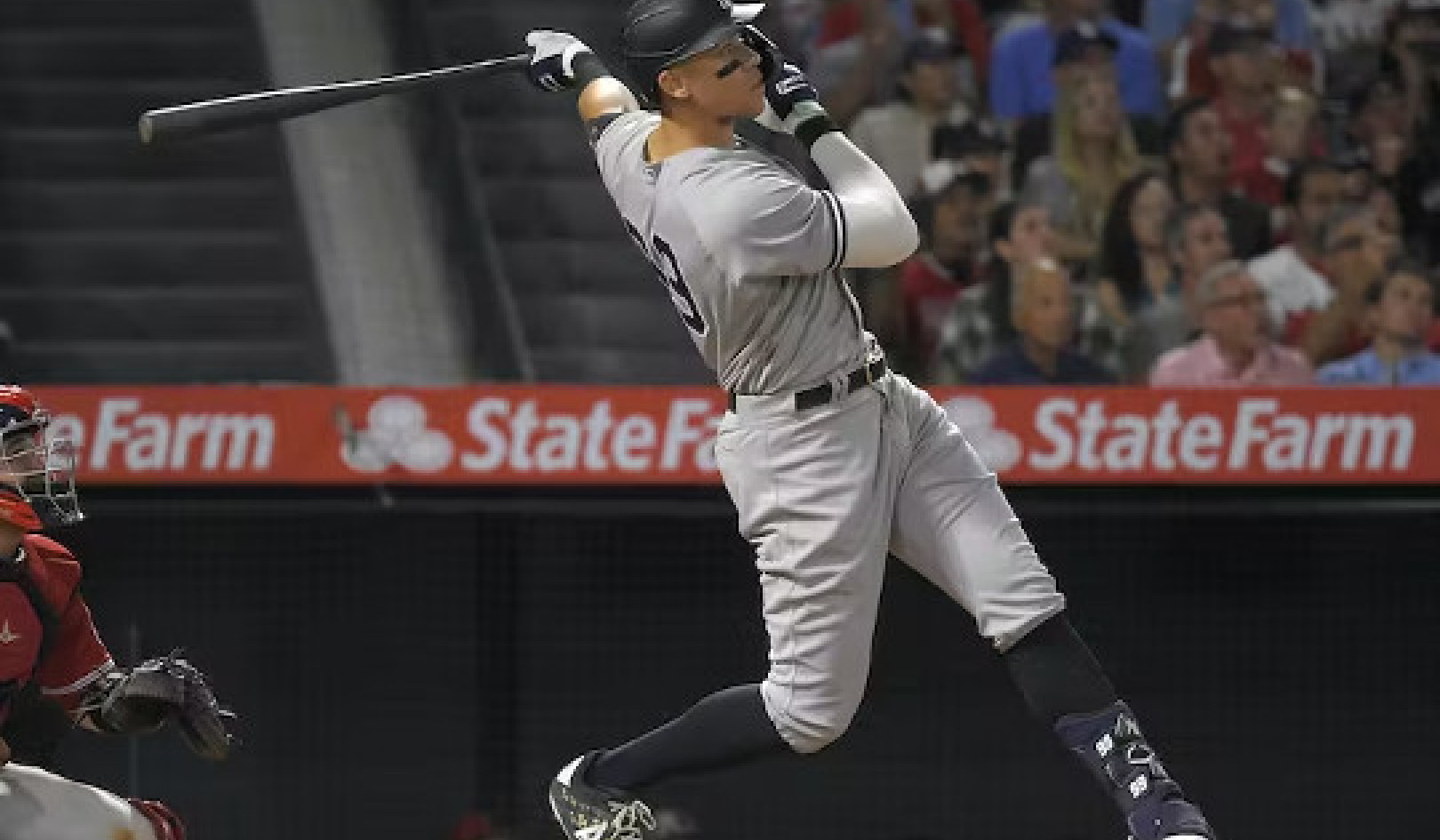
New research confirms how particles from space can be sent careening down into Earth’s atmosphere to create the aurora, filling in a missing piece in how this stunning natural phenomenon is generated. Terry Zaperach/NASA, CC BY-SA
2022's solar cycle 25 is kicking off in style. Our sun has a cycle of activity and as it becomes more active, there will be more sightings of the northern (and southern) lights. That is what is happening this winter.
As well as emitting sunlight, our sun has an expanding atmosphere made of charged particles and magnetic fields. This high-speed solar wind blows over the Earth, but the Earth has its own magnetic field (imagine a large bar magnet with its poles roughly aligned with geographic north and south) and this can deflect the solar wind. This magnetic barrier is weakest at the poles of the “bar magnet” so that we tend to see auroral displays at high latitudes. The bigger the space weather storm, the deeper charged particles can penetrate the magnetic field of the Earth, so that during intense events, the northern lights are seen at lower latitudes.
In 2022 we have seen some spectacular auroral displays, natural light displays in the sky in more places than is usual across the UK. The UK Met office is tracking a coronal mass ejection (a sudden release of energetic charged particles and magnetic field) that left the Sun on 29 January and arrived at Earth overnight on the 1st February so we may see some nice auroral displays in northern Scotland in early February.
Northern lights are also being spotted in northern England this winter which is a tell-tale sign of increasing solar activity.
Why is this happening now?
Solar flares erupt from the surface of the sun, and these expand outwards as coronal mass ejections that carry energy in both their charged particles and magnetic fields. If a coronal mass ejection collides with the Earth, it interacts with the Earth’s magnetic field, driving a geomagnetic storm.
The Earth has a roughly dipolar magnetic field, with a tail stretched out by the solar wind, and with the poles near to the geographic north and south poles, and it is at these high latitudes that the charged particles can travel to reach the Earth’s atmosphere more easily.
Charged particles strike the upper atmosphere (ionosphere), causing it to glow, creating a beautiful display, the aurora borealis or northern lights. These are not just beautiful displays, these extreme space weather events can effect a wide range of systems, from power supplies, aviation, satellites, and radio communications.
Space weather
These can induce unwanted currents in any electrical power grid, causing damage and in extreme cases power cuts. The ionosphere is also disturbed, affecting communications, and further out in space, where the charged particle environment becomes more energised, and can damage satellites.
The sun has a cycle of activity, in active years, solar flares and coronal mass ejections are frequent, while in quiet years, they rarely occur. The solar cycles are on average about 11 years long but actually vary both in duration and in the level of activity. It’s possible to track the level of solar activity by counting sunspots - dark patches on the surface of the sun which correlate with likely occurrence of solar flares. The last few years have been a period of low activity and solar minimum - the minimum in the number of sunspots - was observed at the end of 2019. Solar clock. Chapman et Al, Geophysical Research Letters (2020), Author provided
Solar clock. Chapman et Al, Geophysical Research Letters (2020), Author provided
We are now the rising phase of the new solar cycle of activity as the number of sunspots seen each day is steadily increasing. We can also see increasing solar flare activity. There are three categories of solar flares, measured by their X-ray emissions: X-class flares are big; they are major events that can trigger continental scale radio blackouts and city-wide power outages. M-class flares are medium-sized; they can cause brief radio blackouts that affect Earth’s polar regions. C-class flares are small with few noticeable consequences here on Earth.
On October 9, an M-class solar flare erupted sending a coronal mass ejection that hit Earth on October 12, triggering a moderate geomagnetic storm. On November 3 and 4, we saw the most intense geomagnetic storm to hit Earth since September 2017.
Since each solar cycle is unique both in duration and activity level, it is difficult to predict how active the next phase of the new solar cycle will be. Recently research mapped this irregular cycle in time onto a uniform solar cycle clock, shown in the graphic above.
We can read back from the sun clock to see where (or when) we are in the solar cycle, so as well as helping tourists to plan their Nordic holidays to see the northern lights, this graphic could also help power grid operators who need to schedule critical maintenance during periods of quiet space weather.![]()
About The Author
Sandra C Chapman, Director, Centre for Fusion, Space and Astrophysics, University of Warwick
This article is republished from The Conversation under a Creative Commons license. Read the original article.
Books on The Environment from Amazon's Best Sellers list
"Silent Spring"
by Rachel Carson
This classic book is a landmark in the history of environmentalism, drawing attention to the harmful effects of pesticides and their impact on the natural world. Carson's work helped to inspire the modern environmental movement and remains relevant today, as we continue to grapple with the challenges of environmental health.
Click for more info or to order
"The Uninhabitable Earth: Life After Warming"
by David Wallace-Wells
In this book, David Wallace-Wells offers a stark warning about the devastating effects of climate change and the urgent need to address this global crisis. The book draws on scientific research and real-world examples to provide a sobering look at the future we face if we fail to take action.
Click for more info or to order
"The Hidden Life of Trees: What They Feel, How They Communicate?Discoveries from A Secret World"
by Peter Wohlleben
In this book, Peter Wohlleben explores the fascinating world of trees and their role in the ecosystem. The book draws on scientific research and Wohlleben's own experiences as a forester to offer insights into the complex ways that trees interact with one another and the natural world.
Click for more info or to order
"Our House Is on Fire: Scenes of a Family and a Planet in Crisis"
by Greta Thunberg, Svante Thunberg, and Malena Ernman
In this book, climate activist Greta Thunberg and her family offer a personal account of their journey to raise awareness about the urgent need to address climate change. The book provides a powerful and moving account of the challenges we face and the need for action.
Click for more info or to order
"The Sixth Extinction: An Unnatural History"
by Elizabeth Kolbert
In this book, Elizabeth Kolbert explores the ongoing mass extinction of species caused by human activity, drawing on scientific research and real-world examples to provide a sobering look at the impact of human activity on the natural world. The book offers a compelling call to action to protect the diversity of life on Earth.
Click for more info or to order






















